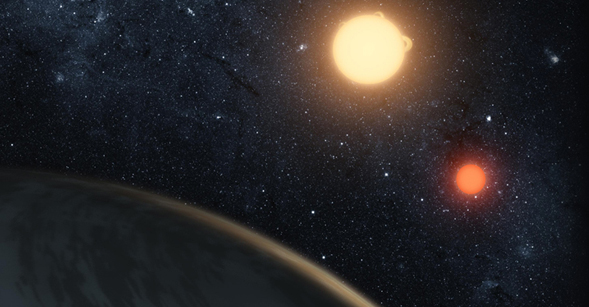Worlds With Two Suns
Professor William Welsh recounts the search for planets that orbit two suns in a new story in Scientific American.

San Diego State astronomer William Welsh is co-author of a featured story in the November issue of Scientific American.
Welsh wrote the piece with Laurance Doyle, a researcher at the SETI Institute in Mountain View, Calif., who earned both bachelor’s and master’s degrees in astronomy from SDSU.
In “Worlds With Two Suns,” Welsh recounts astronomy’s search for “circumbinary planets,” the term for planets that orbit not one star, but two.
The article describes how the planets have to contend with two gravitational fields, leading to complex orbits and wild climate changes.
NASA’s Kepler Mission made the discovery possible. In fall 2011, a team of Kepler scientists led by Doyle with Welsh and fellow SDSU astronomy professor Jerome Orosz, announced the detection of the first transiting circumbinary planet.
"We have a fundamentally different kind of Solar System now," said Doyle. "This is another example of what planetary systems can do."
The circumbinary planet was named Kepler-16b, and its discovery led many to make an analogy with the fictional planet Tatooine from Star Wars.
In the following months, Welsh and Orosz uncovered the existence of five more such planets—proof that while exotic, such systems are not rare.
“A new class of planet system had been established,” Welsh writes in Scientific American. “The current tally of Kepler circumbinary planets is seven, and that number could double in a short time. In fact, calculations suggest that tens of millions likely exist in the Milky Way…and they can even reside in a system’s habitable zone, where liquid water is possible.”
Welsh said these circumbinary planets tend to orbit their stars very closely, seemingly flirting with instability and potential disaster.
“Even though we do not know why these planets seem to prefer such precarious orbits, we can infer something deep,” Welsh said. “The discovery that planets can live so near a chaotic environment is telling us that planet formation is vigorous and robust.”



